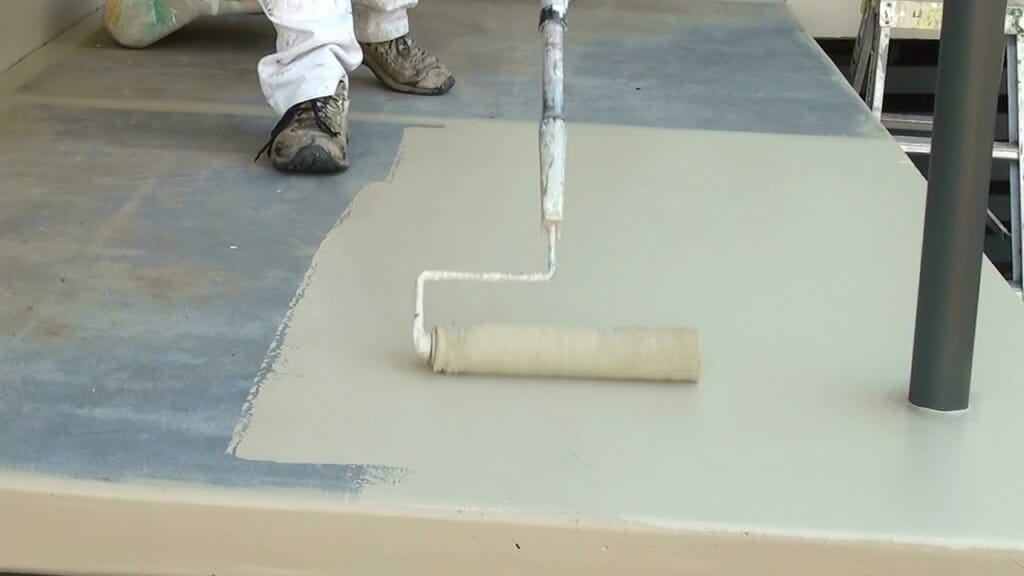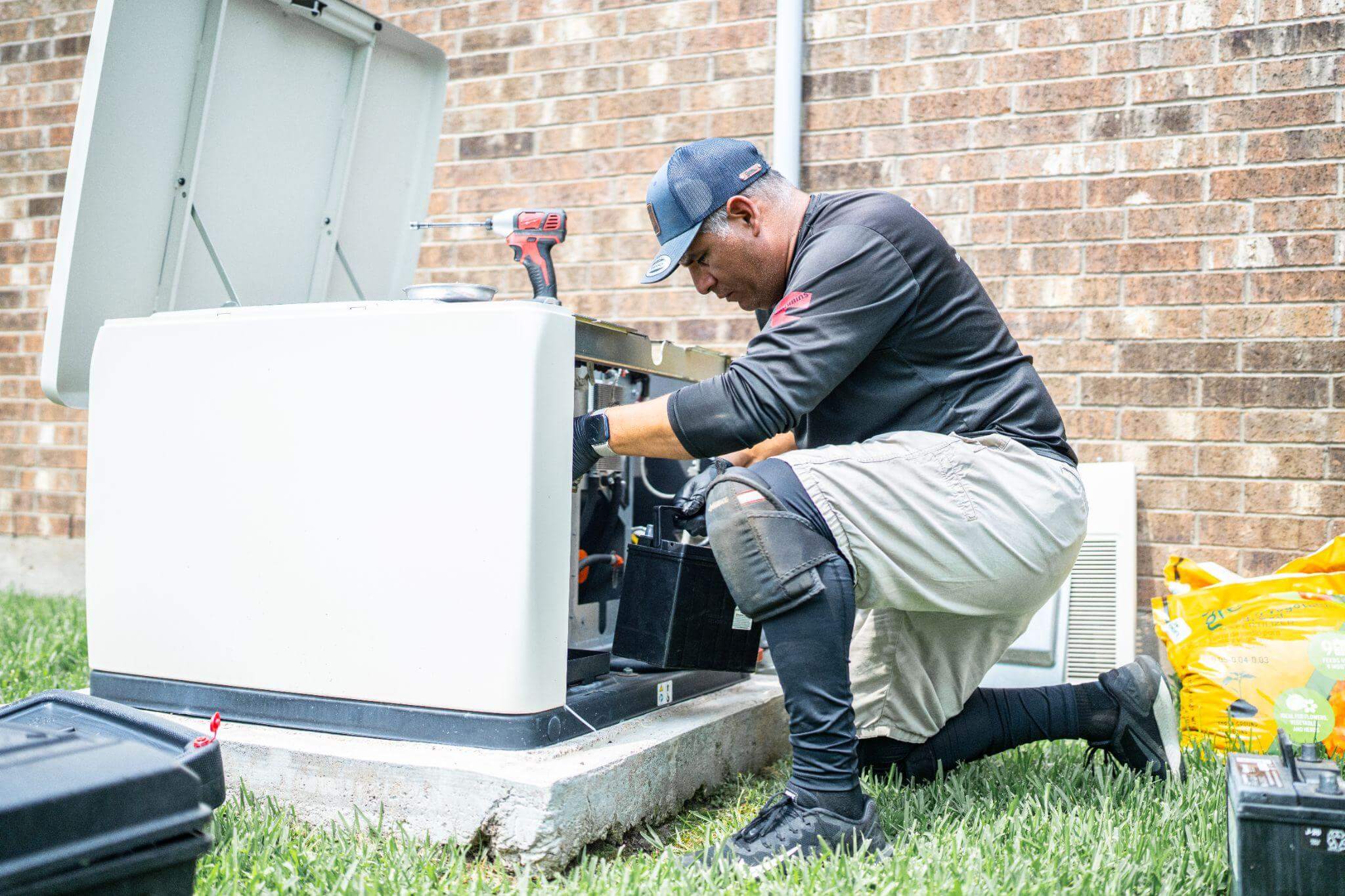Are you doing a home improvement project?
Modernize can pair you with three to four pros in your area, so you can compare options and save time and money.
You’ve got your painter’s tape, roller brushes, plenty of tarp, and a gallon or two of your meticulously chosen new concrete paint color—it’s the one, and you can’t wait to see how vibrant it looks overtop of that dull concrete wall or floor. But wait just a minute there, antsy homeowner—you’re forgetting something.
If you want to paint a concrete surface, whether inside or outside of your home, it’s important that you properly prepare the surface first. One crucial part of the process is using a high-quality primer—this is what acts a go-between for concrete surfaces and paint. Primer guarantees that your paint will stay put by providing the texture necessary for the paint to adhere to the surface.
Even if you invest in high-end paint, without the appropriate primer you’ll find your paint peeling and flaking over time. Before beginning your project, consider the different types of primer available, how to prepare your surface for priming, and how to apply the primer.
Types of Concrete Primer
It doesn’t matter whether you’re painting an indoor or outdoor surface—if you want it to look as good as possible, primer is an absolute must. When you are painting concrete, there are four different types of primer to choose from—acrylic primer, polyurethane primer, epoxy primer, and silane penetrating sealer. Here’s more about how they differ and which is the best choice for you:
Acrylic Primer: Since concrete is very absorptive in nature, an oil-based primer would not provide the best surface for paint. Because of this, many of popular primers are made from acrylic and water, which is able to absorb into the concrete, bonding to the surface and creating the perfect surface for applying paint.
Polyurethane Primer: This type is perfect for surfaces with stains or imperfections. A polyurethane primer provides a strong grip for paint on concrete surfaces and is very resistant to damage.
Epoxy primer: Although it provides a really thin finish, it creates a very strong bond to concrete. Epoxy primer is actually able to absorb into the concrete and creates a great grip on the surface of the concrete for painting. Because this type of primer is so durable, it is the most appropriate for industrial or commercial buildings.
Silane Penetrating Sealer: This sealer is perfect for use outdoors since it’s water-resistant and helps to protect concrete from extreme changes in temperature. Silane Penetrating Sealer is also resistant to the effects of chemicals and biological growth.
Find the Right Contractor for Your Project
Whether you’re ready to begin your project now or need some expert advice, our network of contractors are here to help. With a few simple questions, we’ll find the best local professionals for you
How to Apply Primer on Concrete
Painting a concrete surface is significantly more involved than painting a wall. Concrete has to be specially prepped for paint, or the paint simply won’t adhere as it should. Here’s the right way to do it:
Strip Old Paint: If the concrete surface was painted previously, it is important to remove any paint that is peeling or flaking. For an indoor concrete surface, use tools like a paint scraper or wire brush to remove paint. For outdoor surfaces, a power washer will quickly remove old paint, as well as dirt and weeds.
Clean the Concrete Surface: Concrete is a unique material because it is very absorptive—it easily traps dirt, grease, and oil. For a clean and even coat of paint, your concrete surface will need to be thoroughly cleaned before primer is applied. There are several cleaners on the market created specifically for concrete cleaning. Trisodium phosphate will remove grease and oil, and Krud Kutter has a few different types of more earth-friendly concrete cleaner options.
Seal Interior Concrete: Concrete that is located inside of a home has to be sealed. This is because concrete is a highly absorptive surface and without a seal, moisture can seep inside through concrete. Use a strong sealer to fix any cracks and seal the interior surface of the concrete completely.
Apply Primer: Once you’ve properly prepared the surface of the concrete, you can apply primer according to instructions. Concrete primer is specifically designed to absorb into the surface of concrete, filling imperfections and creating a smooth surface for the paint. Most primers will dry in a few hours, but home improvement professionals suggest waiting a full eight hours after priming before applying paint just to be sure.
Once a concrete surface has been cleaned, sealed, and primed, it is ready for paint. There are specific paint products called masonry paint, that are created for painting concrete. You will also need to invest in brushes designed for this type of product, which can be found at most hardware stores.
While priming a concrete surface seems like one more unnecessary step, it is actually a crucial part of your concrete painting project. Without the appropriate primer, you can expect a poor finish to your project, as well as peeling and cracking of the paint over time. Following these steps, however, will reward you with a thoroughly beautiful paint job that will withstand weather changes and years of wear and tear.
Find the Right Contractor for Your Project
Whether you’re ready to begin your project now or need some expert advice, our network of contractors are here to help. With a few simple questions, we’ll find the best local professionals for you
Reviews from Real Homeowners
Welcome to Homeowner Resources! We are the Modernize blog. Modernize pairs more than 3 million homeowners a year with pre-vetted contractors in their area. This blog started because we believe homeowners should know everything about their homes, from how their HVAC works to which front door colors they might love. On Homeowner Resources, you can find information on every part of your home, right down to how you can negotiate with contractors to get the best price. Here's more about the blog.
Need a contractor? Learn more about how Modernize finds the right pro for you.



